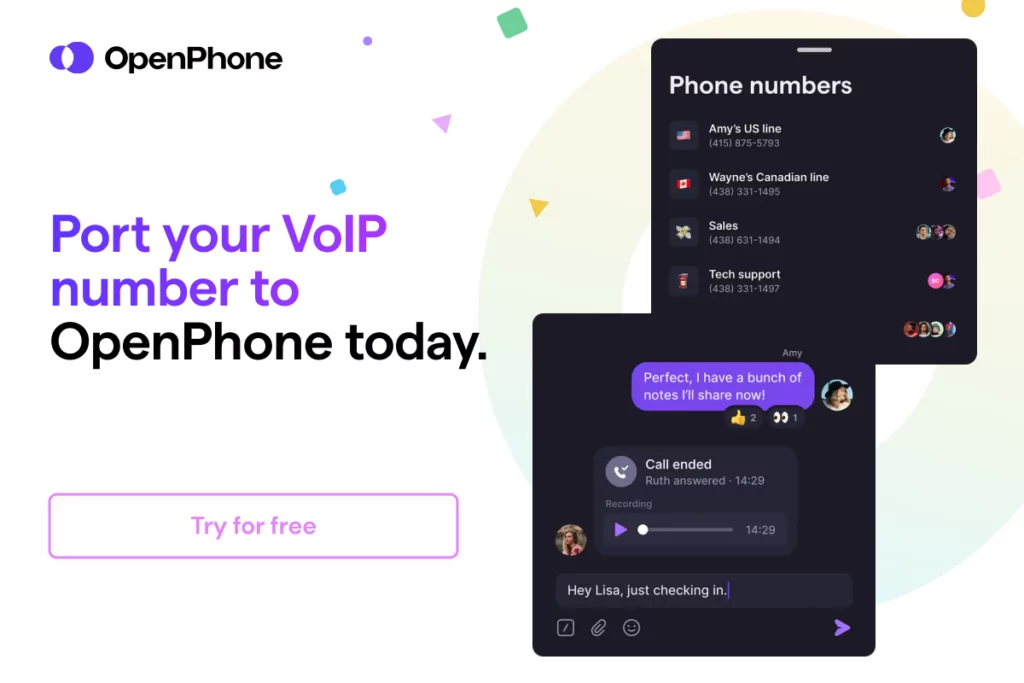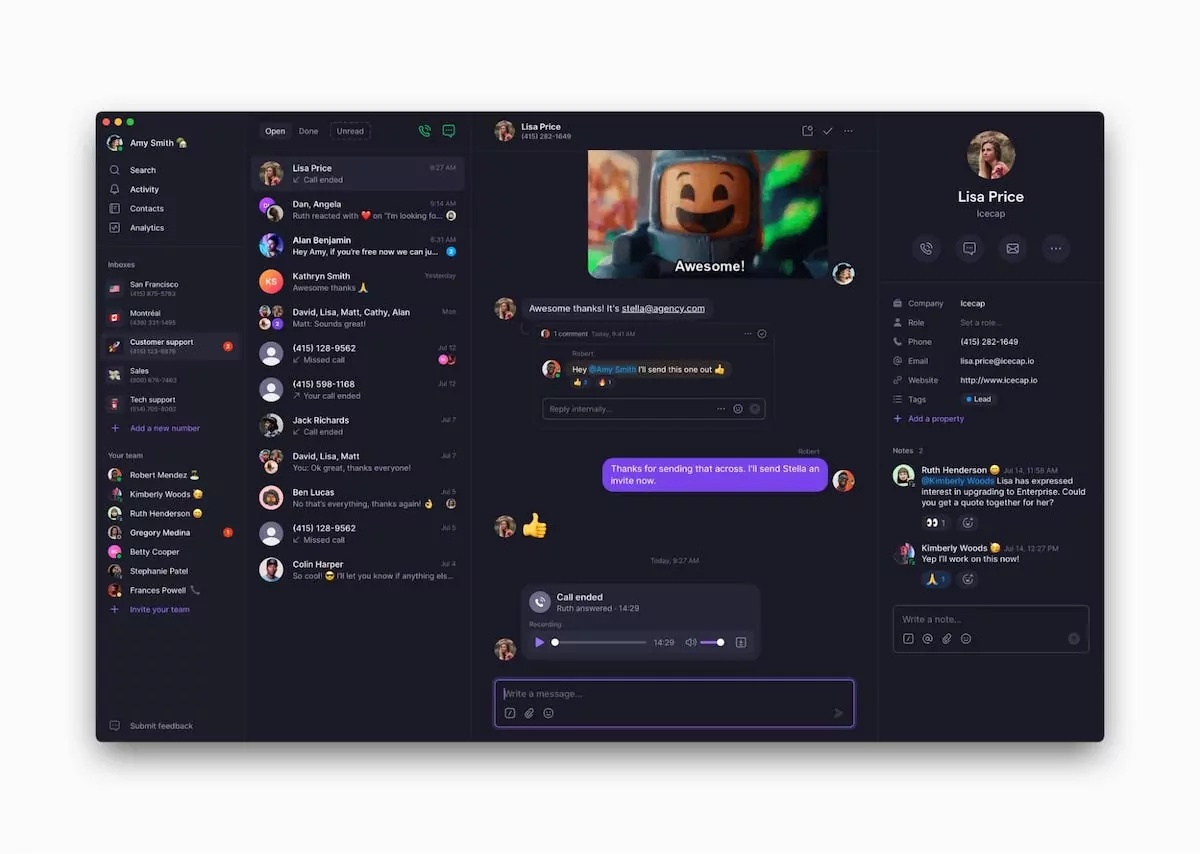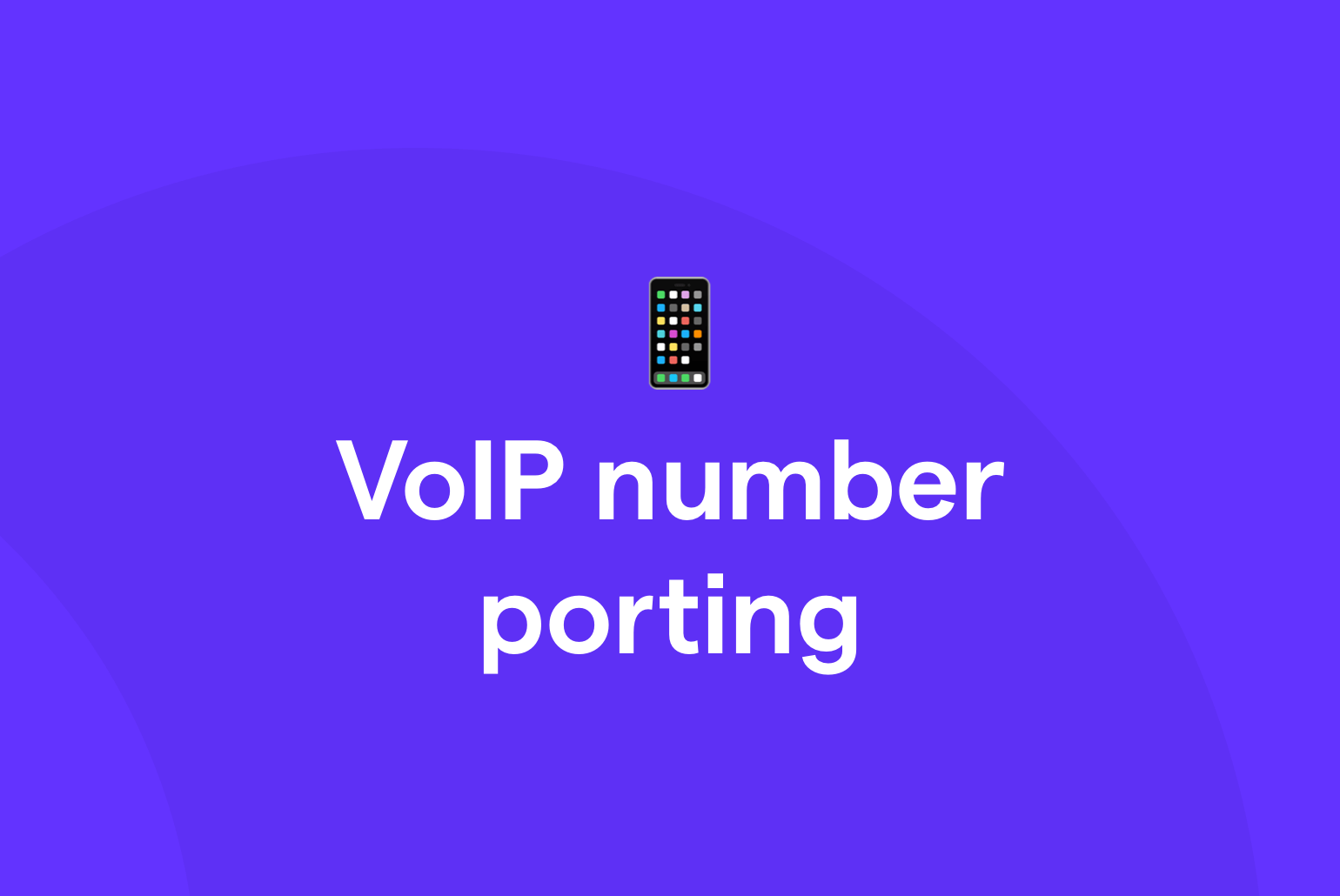When you’re making a move to a new phone system, customers will continue to call and text your business phone number — the one they’ve always contacted — and expect you to be at the other end of the line.
Luckily, VoIP number porting is a seamless process that keeps your business line running with zero disruptions. Here’s what you need to know about porting your phone number to a new VoIP provider.
What is VoIP number porting?

VoIP number porting lets you retain your existing phone number by moving fro your current phone provider (whether that’s a traditional carrier or a VoIP service provider) to a new VoIP service provider.
The Federal Communications Commission (FCC) requires telephone companies to comply with port requests as long as you’re within the same geographic region.
This way, you don’t have to deal with printing out new business cards or adding a new phone number to your website — you can still keep your existing phone number with a new VoIP service.
How exactly does phone number porting to a VoIP provider work?
The phone number porting process only takes a few steps, no matter what provider you’re switching from or which VoIP service you’re moving to. Here’s what it takes to port out your number to a new provider:
1. Let your current provider know you want to port out
Giving your current provider a heads-up that you’re porting out can help you avoid delays on either end of the porting process. Your current provider won’t have to do anything right away, but keep in mind that some providers may charge a porting fee or a termination fee, depending on the terms of your contract. For example, Google Voice’s free plan requires you to pay to unlock your number from their system before you can port your number from Google Voice.
2. Send required information to your new provider
To comply with FCC regulations, your new provider will need your phone bill, latest invoice, and account number. Make sure your documentation includes your name, billing address, phone number, and PIN number (if you have one associated with your account).
You’ll also need to sign a Letter of Authorization so your new provider can port out your number.
Your provider may also request information about the phone numbers you’re porting, like if it’s a mobile, landline, or VoIP number. If you’re looking to port multiple numbers over to a new provider, you’ll also want to make that clear to the provider in any written communication to them.
3. Maintain your current phone service until porting is complete
To avoid any service disruptions, wait until your port is complete before closing your current account. This way, you can continue making and receiving calls while your new provider works their magic. Your new carrier will let you know your port date, after which you can cancel your old service.
How to port your current number to OpenPhone
Want your switch to a new VoIP provider to be the last one you ever make? OpenPhone is a modern business phone service that can scale with you as your company grows. On top of offering integrations, automations, and more features to help you streamline your communication processes, OpenPhone can help you port unlimited numbers (US, Canadian, or North American toll-free numbers) with zero porting fees.
Our porting process only takes three simple steps:
- Sign up for an OpenPhone account.
- Log into the OpenPhone web or desktop app to initiate your port request. You’ll need a copy of your phone bill ready to complete this step along with your current account number and port-out/transfer PIN. You can get these details directly from your current provider.
OpenPhone will take care of the rest. As soon as we confirm your port date and time, we’ll let you know when you can expect your number to be available on your OpenPhone account.
How long does VoIP number porting take?
Porting a number to a VoIP company takes an average of five to seven business days for US numbers and seven to 10 business days for Canadian numbers. In some cases, like when required documentation is missing or incorrect, porting can take up to two weeks.
VoIP number porting: Things to keep in mind
Several factors can affect how long it takes to port your phone number. Here’s what you need to know to avoid or anticipate delays in the porting process.
VoIP number porting requirements
The best way to keep your porting process as efficient as possible is to send your provider all the required documentation as soon as possible. For legal reasons, your provider will need to request the following documents and information:
- A signed Letter of Authorization (LOA)
- Your most recent phone bill
- Your current provider, account number, and port-out PIN number
- A list of the phone numbers you want to port
The name and phone number listed on your phone bill should match the information on your LOA.
Factors that can delay VoIP number porting
While the VoIP number porting process is usually straightforward, some factors can cause delays. If you’ve triple-checked the documentation you provided and are confident that it’s correct, here are a few common reasons porting may take longer than expected:
- Your existing service provider is slow to respond to your new provider
- You’re porting in a phone number from outside of the US
- You’re moving a landline number to a new provider
- Your porting request is rejected due to spelling errors, incorrect information supplied (such as the address or account number not matching what your current carrier has on file) and signatures from unauthorized sources
- Your phone number requires complex porting, which may be the case if it’s attached to multiple lines or unique features like call forwarding and specialized call groups
Yes, as long as the VoIP provider supports the area code or region of the phone number you’re wishing to transfer over, you should be able to port your cell phone number.
Porting a VoIP number to a cell phone is sometimes possible. However, if your VoIP phone number uses an area code that doesn’t match your geographic area — for instance, if you have a Canadian phone number but live in the United States — your cell phone service provider may require you to select a new number. This usually occurs if your new provider doesn’t have the local infrastructure in those areas.
You can typically check your number portability on your new carrier’s website, so you know if you can make the switch.
Yes, you can port your phone number to a VoIP provider in the majority of cases. Since VoIP solutions provide service over the internet instead of through local cell towers, they can support the porting of more telephone numbers than the average cell phone or landline carrier, regardless of your location. For example, you can port US, Canadian, and toll-free numbers to OpenPhone.
Most personal and business phone numbers are portable. However, some landlines and international numbers may encounter porting issues due to information mismatches.
Port your number to OpenPhone, the ultimate VoIP service

VoIP number porting is a straightforward process that can help you access all the benefits of an internet-based phone. When you switch to OpenPhone, you can do more with your US, Canadian, or toll-free number, including:
- Call and message your clients and team members with free calling and texting to anyone in the US or Canada
- Share phone numbers with team members to help each other field calls and texts
- Get additional VoIP numbers; sign up for as many numbers as your team needs
- Streamline business processes by integrating with email, Slack, Zapier, HubSpot, and more
- Set up an automated phone menu so clients can route their own calls
- Record calls for training, quality assurance, or documentation purposes
- Save time sending texts by using snippets, scheduled texts, and auto-replies
Sign up for your free trial of OpenPhone with a temporary new number to try it out — and when you’re ready, start the VoIP number porting process.
